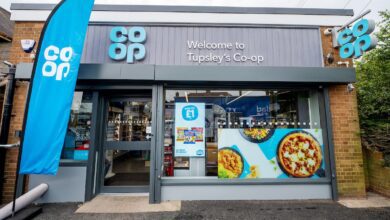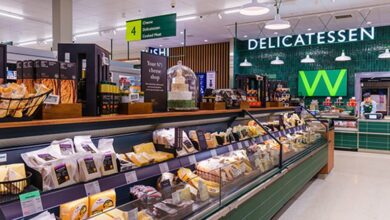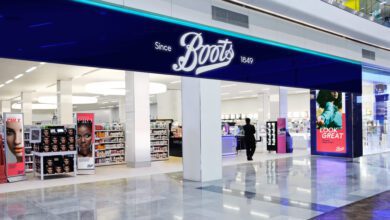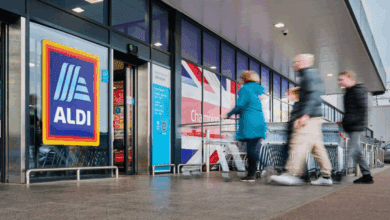How FMCG retailers are personalising our supermarkets

Register to get 1 free article
Reveal the article below by registering for our email newsletter.
Want unlimited access? View Plans
Already have an account? Sign in
Sometimes, the world seems to just turn too quickly; work projects pile up, kids’ schedules get too hectic – even taking the time to pick out a healthy meal at the supermarket can seem like an overwhelming task. As both consumers and busy people, many of us crave convenience when it comes to managing our day-to-day responsibilities.
Retailers understand that any lasting relationship with customers is built on trust— trust that items will be good quality, fairly priced, well-stocked, and supported by a high level of customer service. But as consumers, we also want the retailer to “get us,” and to understand our needs and preferences. A recent Symphony RetailAI survey of 50 U.S. retailers revealed that most fast-moving consumer goods (FMCG) retailers today have the means to tailor the shopping experience for us. They are already using sophisticated personalised marketing tools, but very few retailers have executed a strategy to achieve the full potential of these.
Sourcing valuable customer data
Gaining long-term customer loyalty requires a holistic view of each customer. The more precise the data, the more retailers can personalise marketing campaigns, which will in turn improve customer retention and acquisition.
Only five years ago, most retail data came from POS systems, loyalty cards and external data companies. Today, retailers can go several steps further, bringing in unstructured product, sales, merchandising and supply chain information, as well as real-time data from in-store technologies like beacons, Wi-Fi and store video. Understanding how customers engage with a product, a store layout, or options within a category — and not just whether they buy an item — allows marketers to be more precise with their offers and create outcomes that benefit all areas of the business. It’s even possible for retailers to use third-party data from other retailers (including competitors), wholesalers and manufacturers. Alongside historical industry data, these tools serve to produce an accurate visualisation of each individual household.
Although accumulating data from more sources is essential to painting a more complete picture, it also makes it exponentially more difficult to synthesise the data from disparate sources into an intelligible behaviour profile. In fact, while nine out of ten retailers target customers across multiple communication channels, many struggle to interpret information gleaned on one channel in order to take effective action on another. For example, only:
- 60% target customers based on items browsed online
- 56% target customers based on precise locations
- 40% target customers based on purchase history
- 34% target customers in real time
Leveraging AI-enabled platforms and machine learning
This is where the rise of AI and machine learning becomes incredibly valuable for retailers and marketers. These systems can automate the development of unique shopper profiles and establish intelligent triggers for allocating relevant offers based on the data collected from each touchpoint. AI-enabled systems have the power to acknowledge, contextualise and react to every data point from all channels in real time, allowing marketers to focus on optimising the content and offer set.
In large part, due to the continued adoption of these technologies, and with 60% of respondents emphasising marketing automation as their top personalised marketing strategy, retailers expect to significantly strengthen their personalised omni-channel capabilities in the coming 24 months. By that time:
- 88% will be able to target customers based on items browsed online
- 88% will be able to target customers based on precise locations
- 68% will be able to target customers based on purchase history
- 82% will be able to target customers in real-time
Integrating personalisation across channels
This growth in precise targeting will vastly improve the impact of marketing communications, as well as limiting consumer exposure to the kinds of generic marketing noise they have largely learned to tune out. Yet as marketers become more adept at using our shopping behaviour data to target us, they will need to become much more integrated across channels.
Currently, 74% of retailers claim a high level of proficiency in terms of personalised digital marketing, while 60%claim to be successful personalised marketers offline. These figures are promising, but only 16% made claim to a high ability in integrating personalised marketing across channels.
The future of retail will be more personal than it ever was. In the days when Sam, the local grocer, knew that your family always had steak dinner on Tuesdays and preferred chocolate ice cream, he might also have had a good idea about when to make an offer available to you, how you like to be billed and whether you were dropping subtle hints about visiting the supermarket down the road. Previously, all of this has been entirely out of the reach of anything other than a one-man store in a tiny community. In the AI-enabled marketing environment we’re entering into now, this level of personalisation is available to all retailers because of the vast number of data sources available and the power of technology to structure and simplify that information into highly actionable outputs.
The sun has set on the days of mass promotion. But when it rises on your next busy day managing the important things in life, the FMCG retailers who are making strategic investments today will be there to help you find and buy the items you want, faster and more effortlessly than ever before.
By Julian Bridle, Vice President Presales, EMEA at Symphony RetailAI







